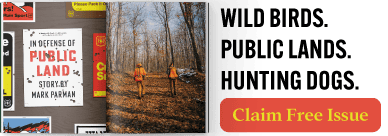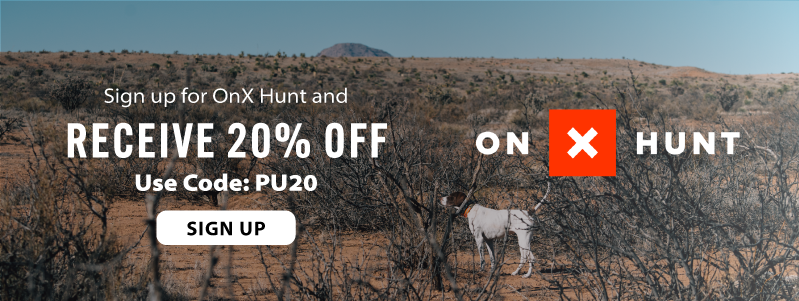Home » Hunting Rules, Licenses, and Seasons » Upland Bird Hunting in Ohio: Pheasant, Bobwhite Quail, Ruffed Grouse, and Other Small Game
Upland Bird Hunting in Ohio: Pheasant, Bobwhite Quail, Ruffed Grouse, and Other Small Game
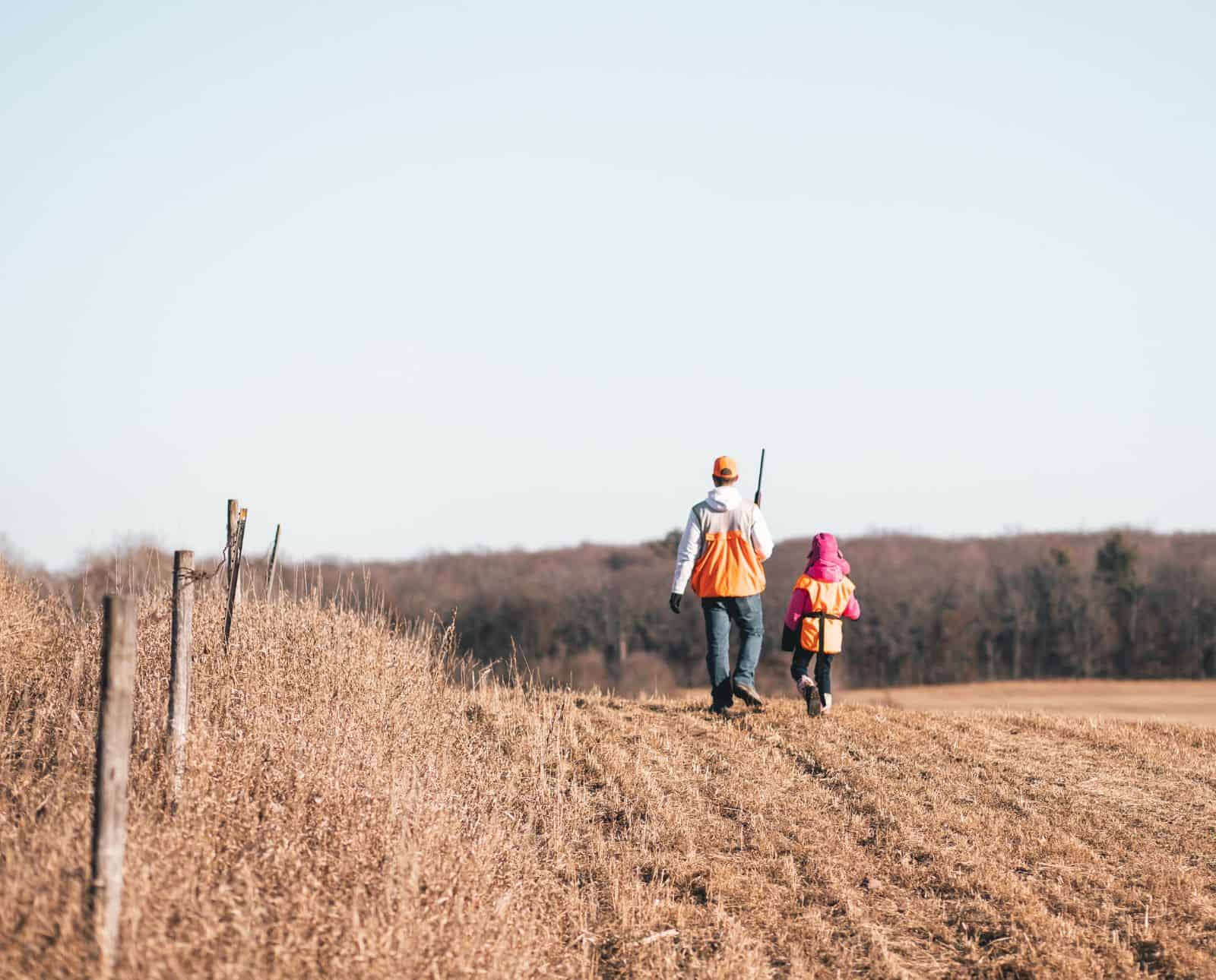
Gabby Zaldumbide is Project Upland's Editor in Chief. Gabby was…
Upland bird hunting season dates, limits, and licensing requirements in the Buckeye State
Like much of the Great Lakes region, Ohio is known for big whitetail bucks. However, many other game species call the state home, including a variety of upland birds and small game. Ruffed grouse, American woodcock, bobwhite quail, pheasant, snipe, doves, and more can all be found in the Buckeye state.
Resident Ohioans have ample opportunities to hunt upland birds. With lots of agricultural land, a nearby Great Lake, and the Appalachian Mountains creeping in to the east, Ohio features several different habitat types. However, land access can vary. While resident landowners and their families may hunt their own property without a license, public land hunters may face limited options in some regions.
Whether you’re an Ohio resident or planning a trip there, this guide covers everything you need to know about Ohio upland bird hunting seasons, bag limits, and licensing requirements.
Ohio Upland Bird And Small Game Season Dates And Limits
You can view Ohio’s 2024-2025 hunting regulations here.
| Species | Season Dates | Daily/Possession Limits | Notes |
| Bobwhite Quail | Nov. 1, 2024 – Dec. 1, 2024 | 2 | Select counties and wildlife areas. See map on page 21 in the regulation handbook for details |
| Ring-necked Pheasant | Nov. 1, 2024 – Jan. 12, 2025 | 2 | Males only |
| Ruffed Grouse | Nov. 1, 2024 – Dec. 1, 2024 | 1 | Select counties. See map on page 21 in the regulation handbook for details |
| Chukar | Nov. 1, 2024 – Jan. 12, 2025 | 2 | |
| American Woodcock | Oct. 12, 2024 – Nov. 25, 2024 | 3/9 | |
| Wilson’s Snipe | Sept. 1, 2024 – Nov. 20, 2024 Dec. 7, 2024 – Jan. 1, 2025 | 8/24 | Nontoxic shot is required |
| Rail (Virginia, Sora) | Sept. 1, 2024 – Nov. 9, 2024 | 25/75 | Nontoxic shot is required |
| Gallinules | Sept. 1, 2024 – Nov. 9, 2024 | 15/45 | Nontoxic shot is required |
| Dove (Mourning and Eurasian collared) | Sept. 1, 2024 – Nov. 3, 2024 Dec. 7, 2024 – Jan. 1, 2025 | 15/45 | |
| Squirrel (red, gray, black, fox) | Sept. 1, 2024 – Jan. 31, 2025 | 6 | |
| Cottontail Rabbit | Nov. 1, 2024 – Feb. 28, 2025 | 4 | |
| Youth Small Game | Oct. 19, 2024 – Oct. 20, 2024 Oct. 26, 2024 – Oct. 27, 2024 | Limits are the same as the regular season |
These dates were last updated on June 10, 2025 and may not reflect any changes since that date. For the most up-to-date information visit the Ohio DNR website.
Pheasant Regulations And Stocking Information
The Ohio Department of Natural Resources (ODNR) stocks ring-necked pheasants throughout the state. Note that only roosters can legally be killed. Pheasants are released during both youth small game seasons, and in 2024, additional releases occurred on November 1, 9, and 28.
ODNR releases pheasants in Charlemont Metro Park, Appalachian Hills Wildlife Area, Berlin Wildlife Area, Caesar Creek Wildlife Area, Camp Belden Wildlife Area, Darke Wildlife Area, Delaware Wildlife Area, Fallsville Wildlife Area, Grand River Wildlife Area, Highlandtown Wildlife Area, Indian Creek Wildlife Area, Oxbow Lake Wildlife Area, Resthaven Wildlife Area, Rush Run Wildlife Area, Spencer Wildlife Area, Spring Valley Wildlife Area, Tiffin River Wildlife Area, Tri-Valley Wildlife Area, West Branch Wildlife Area, Wyandot Wildlife Area, and Zepernick Wildlife Area.
While Ringneck Ridge Wildlife Area gets stocked, that area is accessible by permit only. ODNR asks hunters to be aware that only portions of Killdeer Plains, Pleasant Valley, and Salt Fork Wildlife Areas are accessible via permit.
Bobwhite Quail Private Land And Wildlife Area Access
If you’re looking to hunt bobwhite quail in Ohio, you’ll have to stick to the southern end of the state. Only a handful of counties in southern Ohio allow quail hunting, and it can only be done on private land and two wildlife areas.
Counties that allow quail hunting on private land include: Preble, Butler, Montgomery, Warren, Clinton, Highland, Clermont, Brown, Adams, Pike, Ross, Scioto, Jackson, Vinton, Athens, and Meigs. Additionally, quail hunting is allowed in Tri-Valley Wildlife Area and Crown City Wildlife Area. However, Crown City is only open to control hunts. Quail hunting is illegal on all other public lands.
Ohio Counties That Allow Ruffed Grouse Hunting
Like bobwhite quail hunting, ruffed grouse hunting opportunities in Ohio are limited. Ohio’s ruffed grouse population is shrinking due to loss of habitat and other factors. The following counties allow grouse hunters to take one bird a day: Adams, Pike, Ross, Scioto, Vinton, Jackson, Lawrence, Gallia, Meigs, Athens, Washington, Morgan, Noble, Monroe, Morgan, Belmont, Guernsey, and Muskingum. Grouse hunting is allowed on public lands in these counties.
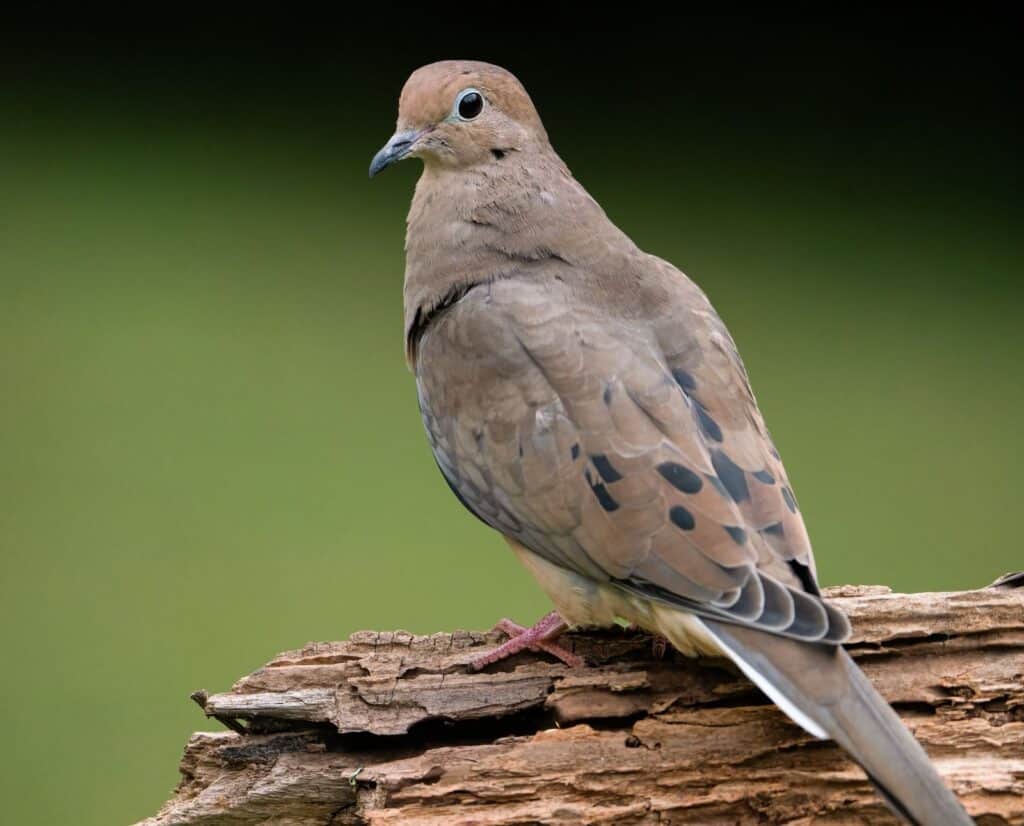
Hunting Migratory Birds In Ohio: Doves, Woodcock, Snipe, And Rails
When it comes to migratory birds, hunters can shoot two dove species, American woodcock, Wilson’s snipe, Virginia rail, sora, and gallinules. All migratory bird hunters must obtain a Harvest Information Program (HIP) certification. You can get a HIP certification by calling 1-877-HIP-OHIO (1-877-447-6446) or online at wildohio.gov. The possession limit for migratory birds is three times the daily limit.
Dove hunters can find mourning and Eurasian collared doves in Ohio. Doves may be hunted from sunrise to sunset, and lead shot is allowed. Additionally, there are some restrictions as to where you can legally dove hunt. Doves can be hunted in areas that have been recently mowed or bush-hogged as well as “areas that have been planted or harvested in a normal agricultural manner.” However, doves (and waterfowl) cannot be hunted in a field where grain or other feed has been recently removed or stored.
When it comes to rail, sora, and snipe hunting, hunters must use nontoxic shot.
Squirrels And Rabbits
Four species of squirrel and cottontail rabbits may be hunted in Ohio. The squirrel species offering hunting opportunities are gray squirrels, red squirrels, black squirrels, and fox squirrels. Squirrels may be hunted from 30 minutes before sunrise to sunset. You can hunt rabbits from sunrise to sunset.
While there is not a controlled hunt for cottontails, there are controlled hunts for squirrels. Hunters may apply for a controlled squirrel hunt with ODNR.
Ohio Upland Bird Licensing Fees
Whether you’re a resident or nonresident, you’ll need a valid Ohio hunting license to pursue upland birds. Below are pricing details for the 2024–2025 season.
| License | Resident | Non-Resident |
| 1-Year Hunting License | $19 | $180.96 |
| 1-Year Apprentice License | $10 | $180.96 |
| (Tourist) 3-Day Hunting License | – | $40.56 |
| Youth 1-Year Hunting License | $10 | $10 |
| Senior 1-Year Hunting License | $10 | – |
| Senior 1-Year Apprentice License | $10 | – |
| Resident Free Senior Hunting License | Free | – |
These fees were last updated on June 10, 2025 and may not reflect any changes since that date. For the most up-to-date information visit the Ohio DNR website.
Ohio residents aged 66 or older are eligible for reduced-cost licenses and permits. Call 1-800-WILDLIFE (1-800-945-3543) to learn more.
Does Ohio Require Blaze Orange for Upland Hunting?
If you are upland bird hunting in Ohio, you are required to wear blaze orange during the gun deer season. It is not legally required to wear blaze orange on public or private land while hunting outside of the gun deer season. However, Project Upland always encourages folks to wear blaze orange while in the field.
Hunting Dog Training Requirements In Ohio
Ohio offers designated dog training areas on select state wildlife areas. It is illegal to train or exercise dogs in state wildlife areas from May 1 through August 31 each year, except for within designated training area boundaries. Nonresidents may only train dogs in Ohio if Ohioans are allowed to do the same in the nonresident’s state. Also, dog handlers may not carry a firearm during the closed furbearer season.
The following state wildlife areas have dog training areas:
- Appalachian Hills
- Berlin
- Caesar Creek
- Delaware
- Fallsville
- Indian Creek
- Killdeer Plains
- Lake La Su An
- Magee Marsh
- Oxbow Lake
- Resthaven
- Rush Run
- Salt Fork
- Spencer
- Tri-Valley
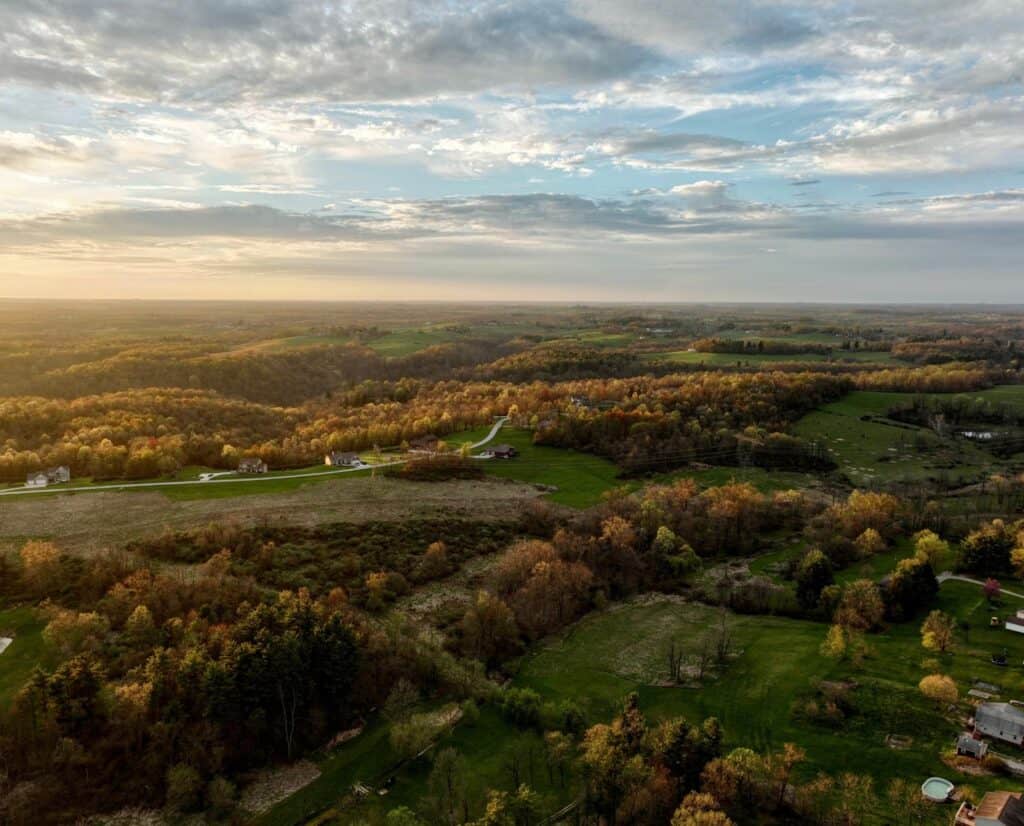
Small Game Hunters Primarily Hunt Private Lands In Ohio
According to Responsive Management’s 2023 report titled “Participation Levels in and Economic Contributions from Outdoor Recreation in Ohio,” 92 percent of Ohioan hunters hunt private land. Only eight percent of Ohio hunters exclusively hunt public land.
According to Project Upland’s annual survey, 11 percent of Ohioan hunters only hunt in Ohio. Eight-three percent hunt in other states in addition to Ohio. Multi-state hunters reported that they hunt in Ohio about 57 percent of the time.
Given that Ohio is about 95 percent private land, public land can be tricky to come by. That said, private hunting preserves, lodges, and clubs are abundant and popular among upland bird hunters in Ohio. While these places require memberships to access them, they offer opportunities to chase birds that the public may not have access to otherwise.
Controlled Hunts
Hunters in Ohio may apply for controlled hunts. ODNR decides who gets a controlled hunt permit via a random lottery system. Select locations, mostly state wildlife areas, offer controlled small game hunts for pheasant, bobwhite quail, and squirrel. The controlled small game hunt application period is from July 1 through July 30. For more information on controlled hunts, click here.
Resources For New Upland Bird Hunters In Ohio
If you are new to upland bird hunting in Ohio, ODNR’s Introduction to Hunting Upland Birds is a great resource. The slideshow explains basic upland bird hunting terminology and techniques, rules and regulations, and how bird hunting contributes to conservation efforts in the state. It also mentions how Ohio’s upland bird populations are in decline. Project Upland encourages new upland bird hunters to familiarize themselves with their state’s hunting laws as well as the health of the native bird populations they choose to pursue.
Ohio Conservation Organizations
Pheasants Forever & Quail Forever Ohio
Ruffed Grouse Society & American Woodcock Society
Gabby Zaldumbide is Project Upland's Editor in Chief. Gabby was born in Maryland and raised in southern Wisconsin, where she also studied wildlife ecology at the University of Wisconsin-Madison. In 2018, she moved to Gunnison, Colorado to earn her master's in public land management from Western Colorado University. Gabby still lives there today and shares 11 acres with eight dogs, five horses, and three cats. She herds cows for a local rancher on the side.

